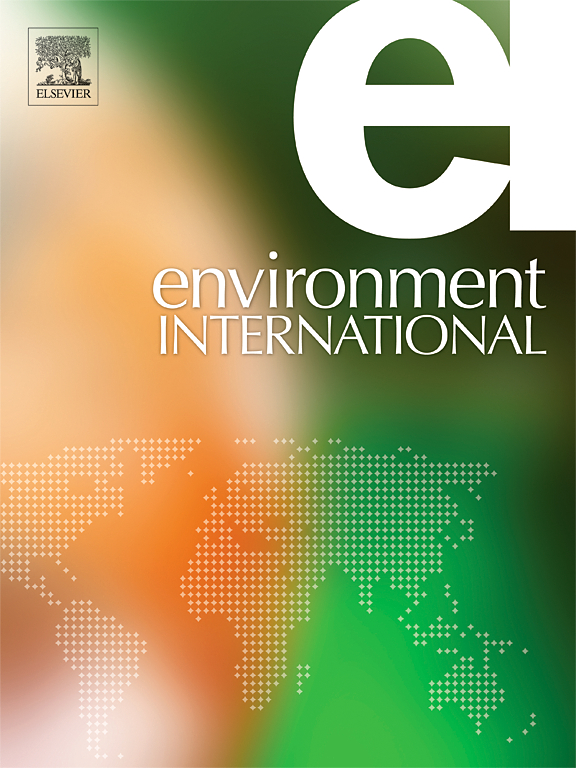利用公民科学和超本地化低成本移动污染源分摊法精确定位污染源
IF 10.3
1区 环境科学与生态学
Q1 ENVIRONMENTAL SCIENCES
引用次数: 0
摘要
目前,用于识别和划分空气污染源的方法因成本高昂而未得到广泛应用。我们介绍了一种新方法,该方法结合了公民科学家在英国伯明翰高人口密度地区每天散步时从多个传感器收集到的移动测量数据。该方法仅使用少量测量数据,就成功确定了影响该地区空气质量的不同来源。结果发现,PM2.5 和 PM1 浓度主要由区域污染源造成。相比之下,PM10 主要与本地污染源有关。可吸入颗粒物的总颗粒数和肺沉积表面积几乎完全与交通有关,而黑碳则与城市背景污染源和本地交通有关。我们的分析表明,虽然超本地源(如建筑工程或交通排放)的影响距离不超过几百米,但它们可以影响人口稠密地区成千上万人的健康。因此,我们利用这种新方法说明了目前测量网络范例的局限性,并提供了另一种多用途方法来了解影响城市空气质量的超本地因素。事实证明,公民科学家的移动监测在提高空气质量数据的时空分辨率方面具有巨大潜力,而无需开展广泛而昂贵的活动。本文章由计算机程序翻译,如有差异,请以英文原文为准。
Pinpointing sources of pollution using citizen science and hyperlocal low-cost mobile source apportionment
Currently, methodologies for the identification and apportionment of air pollution sources are not widely applied due to their high cost. We present a new approach, combining mobile measurements from multiple sensors collected from the daily walks of citizen scientists, in a high population density area of Birmingham, UK. The methodology successfully pinpoints the different sources affecting the local air quality in the area using only a handful of measurements. It was found that regional sources of pollution were mostly responsible for the PM2.5 and PM1 concentrations. In contrast, PM10 was mostly associated with local sources. The total particle number and the lung deposited surface area of PM were almost solely associated with traffic, while black carbon was associated with both the sources from the urban background and local traffic. Our analysis showed that while the effect of the hyperlocal sources, such as emissions from construction works or traffic, do not exceed the distance of a couple of hundred meters, they can influence the health of thousands of people in densely populated areas. Thus, using this novel approach we illustrate the limitations of the present measurement network paradigm and offer an alternative and versatile approach to understanding the hyperlocal factors that affect urban air quality. Mobile monitoring by citizen scientists is shown to have huge potential to enhance spatiotemporal resolution of air quality data without the need of extensive and expensive campaigns.
求助全文
通过发布文献求助,成功后即可免费获取论文全文。
去求助
来源期刊

Environment International
环境科学-环境科学
CiteScore
21.90
自引率
3.40%
发文量
734
审稿时长
2.8 months
期刊介绍:
Environmental Health publishes manuscripts focusing on critical aspects of environmental and occupational medicine, including studies in toxicology and epidemiology, to illuminate the human health implications of exposure to environmental hazards. The journal adopts an open-access model and practices open peer review.
It caters to scientists and practitioners across all environmental science domains, directly or indirectly impacting human health and well-being. With a commitment to enhancing the prevention of environmentally-related health risks, Environmental Health serves as a public health journal for the community and scientists engaged in matters of public health significance concerning the environment.
 求助内容:
求助内容: 应助结果提醒方式:
应助结果提醒方式:


